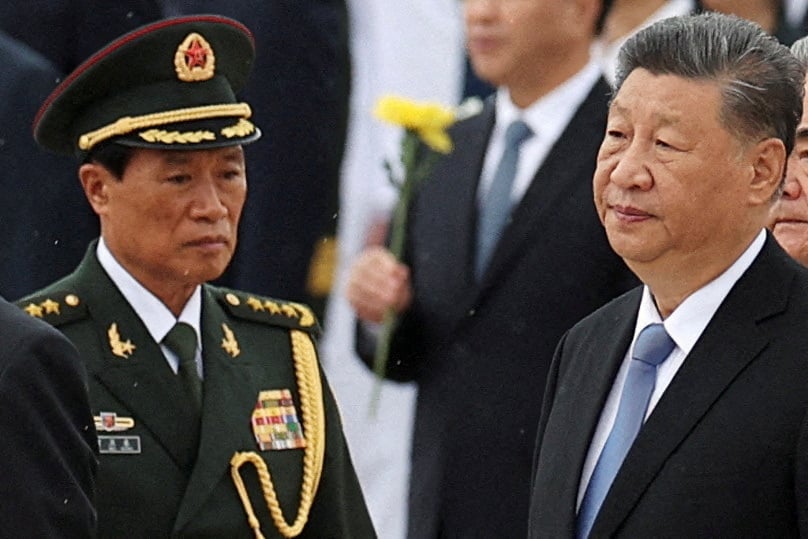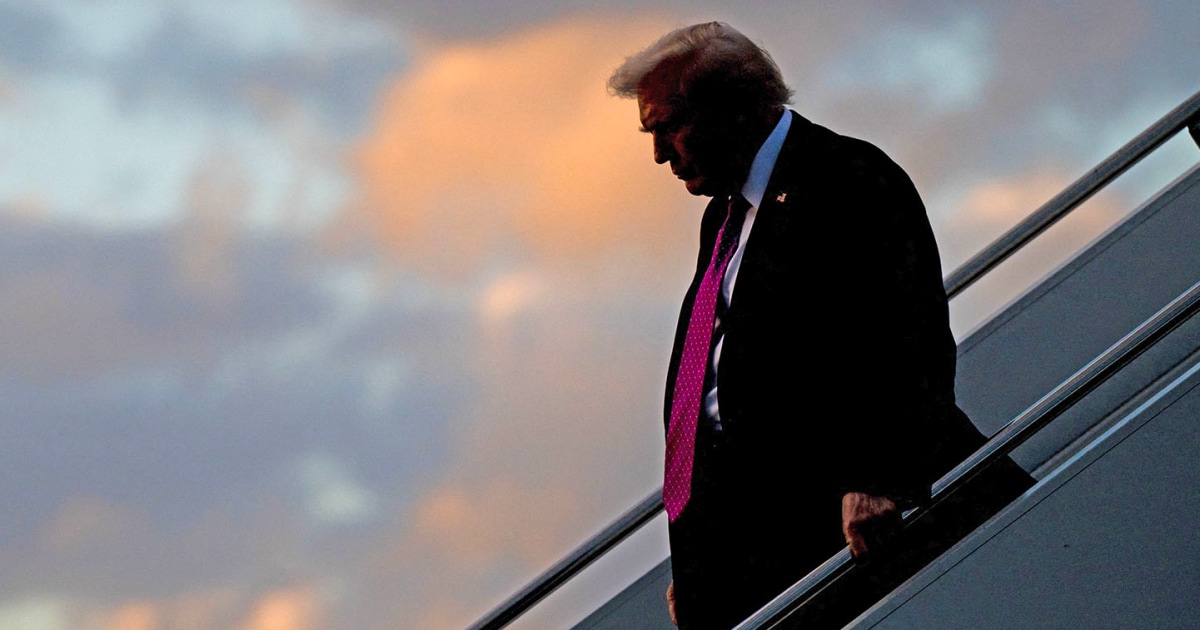Central Military Commission Vice Chairman He Weidong walks by Chinese President Xi Jinping as he arrives for a ceremony to commemorate Martyrs’ Day, on the eve of the 75th founding anniversary of the People’s Republic of China, on Tiananmen Square in Beijing, China, on September 30, 2024. [Florence Lo/Reuters]
Chinese President Xi Jinping was to present his proposals for the 15th Five-Year Program at the start of the Communist Party’s Central Committee Plenum in Beijing on Monday, setting out the plan for economic and social development from 2026-30.
“Chinese and foreign experts have noted the unique strengths of China’s governance systems, and said the stable development of China will continue to inject certainty into an increasingly volatile world,” the English-language Global Times reported. It quoted the Xinhua news agency saying that the plan will outline “key goals and measures for economic growth, technological innovation, people’s livelihoods, reform and other areas.” It will “prioritize high-quality development fueled by innovation,” it added.
The two state media outlets did not need to refer to the great armaments campaign and the alliances with members of the “Anti-Western” bloc that were on full display at the military parade in early September commemorating the 80th anniversary of the end of World War II.
Behind the bureaucratic jargon it is clear that China is in direct competition with the United States (specifically) and the West (in general). And this rivalry is not limited to the economy and trade, but involves politics and diplomacy, too, where the United States is destroying alliances and pushing others, such as India, into China’s embrace.
The Global Times references to “unique strengths of China’s governance systems” and to “stable development” highlight how Beijing presents its political and economic model as a choice for other countries. At a time when liberal democracy is threatened even within the United States, when the US president’s use of tariffs as a personal punitive weapon is shaking the free market, the “certainty” that China presents has an impact – it shakes faith in democracy and encourages autocrats everywhere.
Also, since October 1, the domestic political rivalry in the United States has paralyzed the federal government, providing Trump with the opportunity to further break down the country’s federal framework. And so, the centralized Chinese model, and the stability that it imposes, comes across as an example to be copied. Almost every day, the United States under Trump is giving up more territory to China in the contest for global influence.
Trump (consciously or unconsciously) seems to want to turn the United States into something very much like China – where a small leadership group decides everything and the rest rubber-stamp it, where the state interferes in private companies, where protectionism rules. But it would be very difficult for the United States to win a trade and manufacturing war.
It only takes a couple of points to see this: China has a near monopoly on processing rare earth materials, it is investing huge amounts in artificial intelligence, Chinese salaries in manufacturing are a quarter those in America, while 55 percent of the world’s manufacturing robots are in China.
(We will return with more parameters of this rivalry, and discuss how it can affect us in Europe and Greece, too.)


